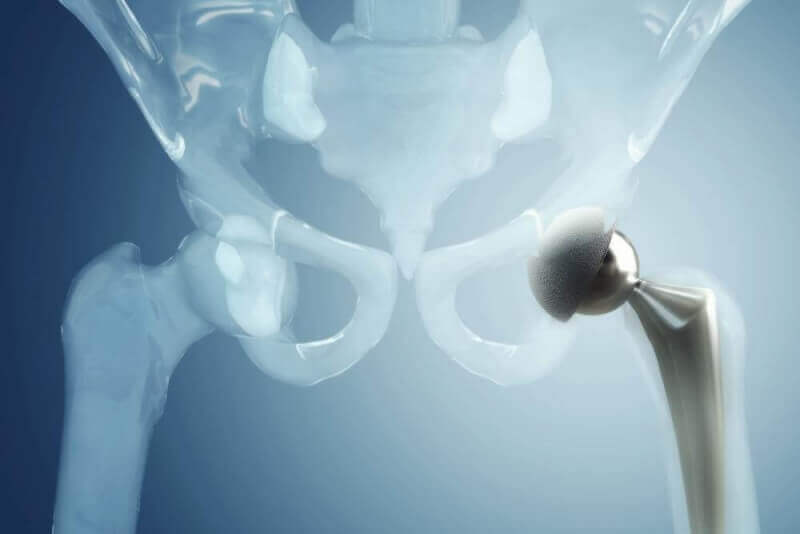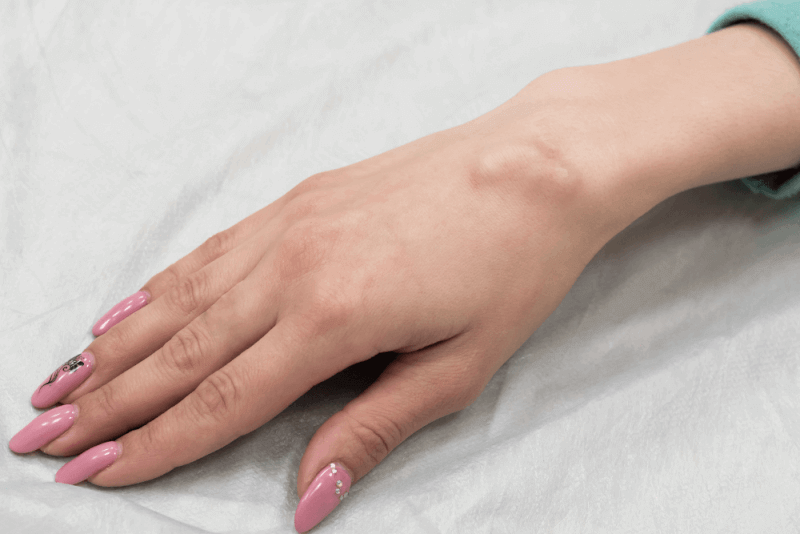What is Hip Replacement?
Hip replacement is a surgical procedure used to treat problems in the hip joint, which is the largest joint in the body. A hip replacement involves placing a specially prepared prosthesis into the appropriate position within the hip joint.
The prostheses used to replace the damaged areas of the hip joint are made of ceramic, metal, or hard plastic. This procedure helps improve the patient's mobility and reduces pain.
Types of Hip Replacement
Different types of hip prostheses are used depending on the issue with the hip joint. These are divided into two main categories: total and partial. Total hip prostheses are further divided into two subcategories.
Partial Hip Replacement
Partial hip replacements are less commonly used. In these procedures, only a portion of the hip joint is replaced. Partial hip replacements are generally applied in certain types of hip fractures and tumor cases.
Total Hip Replacement
In total hip replacement, the entire hip joint is replaced with a prosthesis. These prostheses consist of the femur, femoral head, and acetabulum components. Total hip replacement is used in almost all hip replacement surgeries.
Cemented Hip Replacement
In cemented hip replacement, a special adhesive is used to secure the prosthesis to the hip bone, hence the name "cemented hip replacement." The adhesive is prepared by mixing powder and liquid components and hardens within 10 minutes under surgical conditions. However, cemented hip replacements are only applied to a limited number of patients.
Cementless Hip Replacement
Cementless hip replacement is the most commonly used type of total hip prosthesis. In cementless hip replacements, implants are applied using prosthetic components specially designed for fixation.
Indications for Hip Replacement
The following conditions may damage the hip joint and necessitate hip replacement surgery:
Osteoarthritis
Osteoarthritis, also known as degenerative joint disease, is caused by wear and tear on the cartilage that cushions the ends of the bones. Hip replacement surgery helps restore smooth joint movement.
Rheumatoid Arthritis
Rheumatoid arthritis, caused by an overactive immune system, can lead to both cartilage and underlying bone erosion. This condition produces inflammation, resulting in joint damage and deformity.
Osteonecrosis
When a hip dislocation or fracture prevents adequate blood flow to the round part of the hip joint, the bone may collapse and become deformed, making hip replacement necessary.
Hip Fracture
In some cases, fractures in the hip joint or bones cannot heal on their own, and the fracture may also result in a loss of mobility. In such situations, hip replacement is considered.
Hip Joint Tumors
After the surgical removal of tumors in the hip joint, hip prostheses may be used to fill the resulting voids.
Who is a Candidate for Hip Replacement?
Hip replacement is not considered the first treatment option for hip problems. Other treatments are applied first. If these treatments are unsuccessful and the following issues persist, specialists may consider hip replacement:
- Difficulty rising from a seated position
- Problems with climbing or descending stairs
- Interference with sleep
- Difficulty walking even with a cane or walker
- Persistent pain despite taking painkillers
- Pain that interferes with daily activities
Hip Replacement Surgery
If doctors determine that hip replacement surgery is necessary, the prosthesis is placed surgically after the necessary evaluations are completed. Before surgery, patients must wear a hospital gown to facilitate the procedure. Depending on the procedure, general anesthesia or local anesthesia, which numbs the lower half of the body, is applied. Hip replacement surgeries typically last about 2 hours, and the procedures performed during the surgery include the following:
- A vein is accessed, and a catheter may be inserted into the bladder before surgery.
- The surgeon makes an incision along the tissue layers over the hip. The patient's position is adjusted according to the surgeon's approach before the incision is made.
- The damaged bone and cartilage are then removed, leaving the healthy bones intact.
- A replacement socket is placed into the pelvic bone.
- A metal rod is inserted into the top of the femur, and a ball is placed on top of the rod to form the joint.
- To alleviate pain after surgery, an anesthetic drug is injected around the nerves or inside the joint.
- After surgery, dissolvable stitches or adhesives are used to close the tissues.
- Patients are monitored in a recovery room for a few hours after surgery before being moved to their room. During this time, patients need to take deep breaths, cough, or use a device to clear fluid from the lungs.
Before Hip Replacement Surgery
Before hip replacement surgery, patients undergo a thorough examination, and various imaging techniques are used to confirm the diagnosis. Once the diagnosis is confirmed, the surgery is planned, taking into account the patient's overall health and current medications.
It's important to determine whether the patient has diabetes or an infection before surgery. If an infection is present, it must be treated before surgery. Dental checks are also important to reduce the risk of infection. Additionally, patients who are overweight should aim to reach their ideal weight before surgery.
After Hip Replacement Surgery
Recovery begins immediately after surgery, so doctors encourage patients to stand and move as soon as possible. If there are no complications, patients can be discharged once they can walk, climb stairs, and get into a car.
Some patients may need to undergo physical therapy as inpatients after surgery, while others can perform physical therapy exercises at home. The surgeon will inform patients on how to manage their pain and what to expect during the recovery period.
The following are important considerations for patients after hip replacement surgery:
- The surgical site should be kept clean and dry at all times.
- The doctor will explain how to bathe properly.
- All prescribed medications should be taken according to the doctor's instructions.
- Physical therapy should not be neglected.
- Patients should continue with their normal diet unless instructed otherwise by their doctor.
- Swelling can be managed by elevating the leg and applying a cold compress.
- Patients should not drive unless cleared by their doctor.
Blood Clots
One of the main concerns after hip replacement surgery is the risk of blood clots forming in the legs. To prevent this complication, the following precautions should be taken:
- Begin moving as soon as possible after surgery.
- Compression stockings or inflatable air sleeves can be worn on the legs during and after surgery.
- Blood-thinning medications may be prescribed.
Physical Therapy
Physical therapy is crucial after hip replacement surgery. It helps strengthen the muscles, and patients are taught how to use devices such as walkers or canes. As therapy progresses, the weight placed on the operated leg increases.
Home Care
Before being discharged from the hospital, doctors will explain how patients should take care of themselves at home. Home care requires particular attention to the following:
- Keep items like phones, tissues, water, or TV remotes in areas where you spend the most time during the day.
- Using a raised toilet seat or shower chair can increase comfort during the recovery period.
- Positioning daily essentials at waist height can prevent the need for bending or reaching up.
Risks of Hip Replacement Surgery
The risks associated with hip replacement surgery include the following:
- The most significant risk of hip replacement surgery is blood clots. Clots that form in the leg veins after surgery can travel to the heart, lungs, or brain.
- Like all surgeries, hip replacement carries the risk of infection. Most infections that occur after surgery can be treated with medication. However, if an infection occurs near the hip, the prosthesis may need to be replaced.
- During hip replacement surgery, fractures can occur in the healthy bones while removing the damaged tissues. Some of these fractures may heal on their own, while others may require wires or screws for stabilization.
- Within a few months after surgery, the new joint may dislocate. In such cases, support devices may be used to keep the hip in the correct position. If the hip continues to dislocate despite these devices, another surgery may be needed.
- There may be a difference in leg length after surgery due to the contraction of muscles around the hip. Physical therapy can gradually stretch the muscles, reducing the leg length difference to an unnoticeable level.
- Years after surgery, the implant may loosen from its position, causing pain. In such cases, surgery is required to address the issue.
- Although rare, nerve damage during surgery is possible. This may result in numbness, tingling, and pain.











